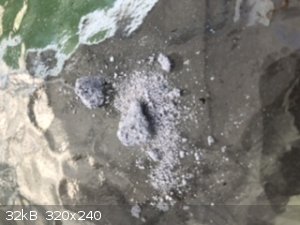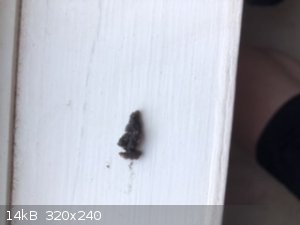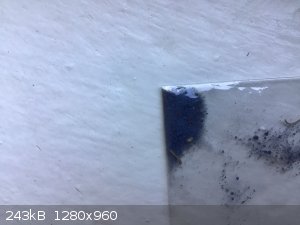Bestbmc
Harmless

Posts: 20
Registered: 4-4-2018
Member Is Offline
Mood: No Mood
|
|
The Fumed Silica Mystery
Hello everyone,
I have been working with some fumed silica for a while now, its a incredibly fine and lightweight powder of glass that it produced by burning silicon
tetrachloride with oxygen.
It works very well to gel fuel like mixes of gasoline and kerosene as a fuel source.
I have been trying to create a reusable gelling agent to do this, so one the fuel is burned, I can add more and the silica gels it, since the silica
isn’t damaged by heat.
The problem is that after it is burned, the silica forms a very fragile chalky solid that does not gel anymore. It can absorb a little fuel, but it
has poor performance as it forms little grains, and once they have absorbed the max amount of fuel it becomes a watery mix of the unabsorbed fuel, and
fuel absorbed in the grains of silica
I have tried to solve this problem by adding a dopant of fine clay, carbon and other impurites to try and stop the slica particles from coming
together and forming a chalky solid, but I have found they don’t help.
Does anyone have any ideas of how to fix this?
 
|
|
|
ShotBored
Hazard to Others
  
Posts: 124
Registered: 19-5-2017
Location: Germany
Member Is Offline
Mood: No Mood
|
|
Are you making this yourself? If not, is this hydrophilic silica (like Cabosil) or hydrophobic silica?
|
|
|
Bestbmc
Harmless

Posts: 20
Registered: 4-4-2018
Member Is Offline
Mood: No Mood
|
|
I don’t make it myself, I bought the hydrophilic epoxy thickener and and the hydrophobic version. After burning both gels once, the closest I was
able to get it to it’s original state was a gritty gel, which I made by grinding the used powder with some fuel, which isn’t ideal, as I don’t
want to have to grind it everytime I use the gel.
|
|
|
Triflic Acid
Hazard to Others
  
Posts: 486
Registered: 27-9-2020
Member Is Offline
Mood: Slowly Oxidizing into Oblivion
|
|
Try using alcohol as the fuel, I think the ash is causing the clumping. Alcohol burns cleaner than kerosene or gasoline
There wasn't a fire, we just had an uncontrolled rapid oxidation event at the power plant.
|
|
|
Bestbmc
Harmless

Posts: 20
Registered: 4-4-2018
Member Is Offline
Mood: No Mood
|
|
I have tried to use alcohol as a fuel, it gives the same result, on the surface of the gel it turns white, shrinks and cracks as it burns, as the fuel
evaporates. I just tried to boil water out of a gel, and it gives the same powdery solid.
I think it is like a making aerogel incorrectly, it evaporates very quickly, and the little particles get condensed as the fuel evaporates off,
leaving a chalky, weak solid.
|
|
|
Triflic Acid
Hazard to Others
  
Posts: 486
Registered: 27-9-2020
Member Is Offline
Mood: Slowly Oxidizing into Oblivion
|
|
Ok then, maybe you should try adhering the particles to the surface of something else, similar to how Pd/C is made. The particles should not be able
to move in that case.
There wasn't a fire, we just had an uncontrolled rapid oxidation event at the power plant.
|
|
|
Bestbmc
Harmless

Posts: 20
Registered: 4-4-2018
Member Is Offline
Mood: No Mood
|
|
That does sound like a good idea, I will have to look into doing it to improve performance. I was thinking of reacting a solution of sodium silicate
with a acid over activated carbon to form Sio2 particles which I think are similar to fumed silica particles.
|
|
|
Triflic Acid
Hazard to Others
  
Posts: 486
Registered: 27-9-2020
Member Is Offline
Mood: Slowly Oxidizing into Oblivion
|
|
Should be, but don't use activated carbon, that will burn away. Maybe some high temperature polymer.
There wasn't a fire, we just had an uncontrolled rapid oxidation event at the power plant.
|
|
|
Bestbmc
Harmless

Posts: 20
Registered: 4-4-2018
Member Is Offline
Mood: No Mood
|
|
I think activated carbon will work in my case, I designed a fuel container that was a tuna can with very fine stainless steel wire mesh on top, it
allowed the fuel to evaporate out, but prevented oxygen from getting in. It worked, it just had poor performance because the silica clumped after use,
which this should solve.
|
|
|
Triflic Acid
Hazard to Others
  
Posts: 486
Registered: 27-9-2020
Member Is Offline
Mood: Slowly Oxidizing into Oblivion
|
|
Oh, then it should work. I thought you were just lighting a lump of the stuff on fire, not with an actual burner system.
There wasn't a fire, we just had an uncontrolled rapid oxidation event at the power plant.
|
|
|
Bestbmc
Harmless

Posts: 20
Registered: 4-4-2018
Member Is Offline
Mood: No Mood
|
|
I mixed some fumed silica with finely powdered carbon, and it didn't’ t really work.
I mixed both in water, and then boiled the water out, at higher concentrations of carbon, it seemed to strengthen the material formed, and at lower
concentrations it seemed to slightly improve it by making the solid slightly weaker and more crumbly. On the bright side, it did make a very cool navy
blue pigment for some reason.
I will have to try using sodium silicate to deposit some silica on carbon next.

[Edited on 5-27-2021 by Bestbmc]
|
|
|
Praxichys
International Hazard
    
Posts: 1063
Registered: 31-7-2013
Location: Detroit, Michigan, USA
Member Is Offline
Mood: Coprecipitated
|
|
Are you sure the fumed silica isn't simply sintering because of the heat?
|
|
|
Triflic Acid
Hazard to Others
  
Posts: 486
Registered: 27-9-2020
Member Is Offline
Mood: Slowly Oxidizing into Oblivion
|
|
He also got the same result just by soaking the silica in water and evaporating the water. Its like incorrect aerogel drying, not sintering. Also, the
carbon would burn off first, before silica sintered.
There wasn't a fire, we just had an uncontrolled rapid oxidation event at the power plant.
|
|
|
Bestbmc
Harmless

Posts: 20
Registered: 4-4-2018
Member Is Offline
Mood: No Mood
|
|
I think that since the silica is contained in the water, it shrinks with the fluid as it evaporates, leaving a denser solid when the last of the water
evaporates.
I don’t think this can be avoided, so im trying to find ways to may the solid weaker or prevent the silica particles from coming together, to make
it easier to be re hydrated with a liquid. I also don’t think it is sintering, as it is a crumbly solid, and I didn’t use high temperatures.
|
|
|
Triflic Acid
Hazard to Others
  
Posts: 486
Registered: 27-9-2020
Member Is Offline
Mood: Slowly Oxidizing into Oblivion
|
|
Maybe try adding ethanol to sodium silicate. That forms a semi-solid gel that could be chemically regenerated by reacting it with NaOH and then adding
ethanol.
There wasn't a fire, we just had an uncontrolled rapid oxidation event at the power plant.
|
|
|
clearly_not_atara
International Hazard
    
Posts: 2799
Registered: 3-11-2013
Member Is Offline
Mood: Big
|
|
In nanoparticle physics there is a relationship between solubility and curvature, where the solubility of a surface with positive (negative) curvature
increases (decreases) with increasingly sharp curvature. This is due to the asymmetric probability of transport into/outfrom a curved boundary. The
relationship looks like this, with c(r) being the effective solubility parameter at an interface with curvature radius r (k is a
constant capturing various physical parameters):
c(r) = c(∞)exp(k/r)
Possibly, there is a corresponding relationship between melting / glass transition / vapor pressure and curvature, with very tiny particulates having
less heat tolerance than the bulk solid. While it may not "sinter", it may nonetheless ripen, leaving more large particles and fewer small
ones.
https://en.wikipedia.org/wiki/Ostwald_ripening
So there is no guarantee that fumed silica can be reused, physically speaking, and there are reasons to believe it may not be possible.
[Edited on 30-5-2021 by clearly_not_atara]
|
|
|
Bestbmc
Harmless

Posts: 20
Registered: 4-4-2018
Member Is Offline
Mood: No Mood
|
|
Yeah, I got down to my last idea of making it work today, I tried dissolving polystyrene in a lot of solvents like acetone, mineral sprits, gasoline
etc, and mixing it with the silica and then evaporating the mixture to leave a power of polystyrene and fumed silica. I hoped the polymer would
interfere with the silica coming together, but when I tried to gel the fuel with the powder, it worked worse than just reusing the silica.
|
|
|